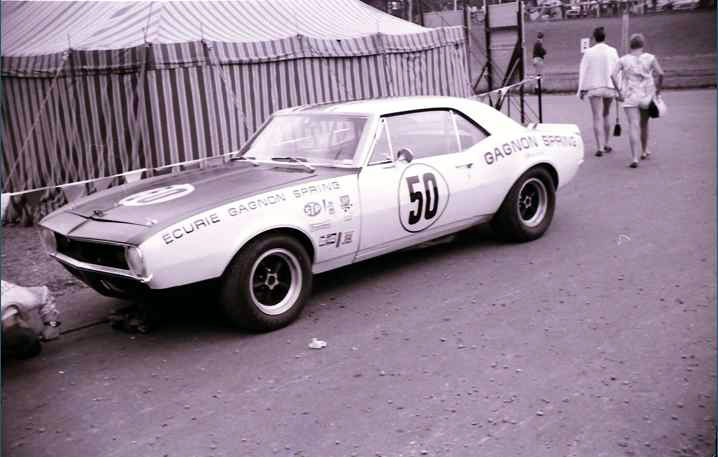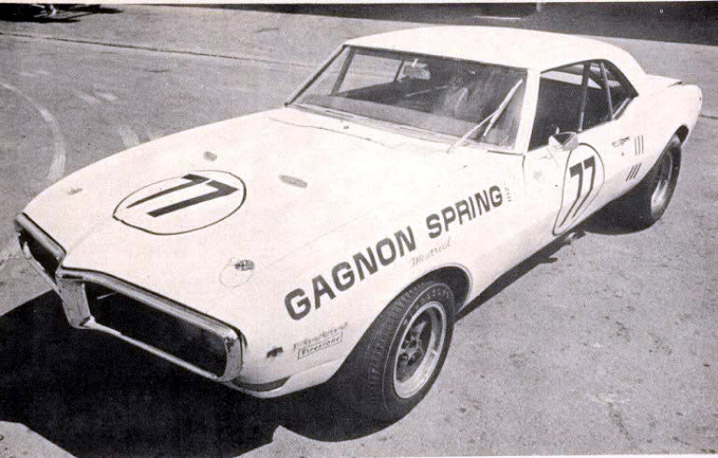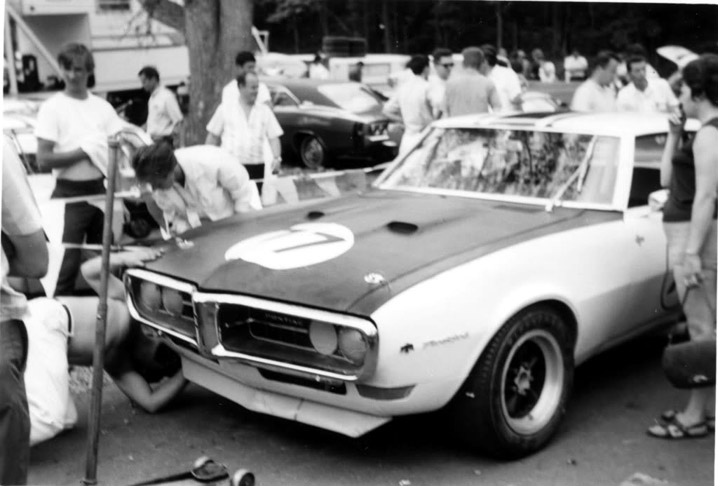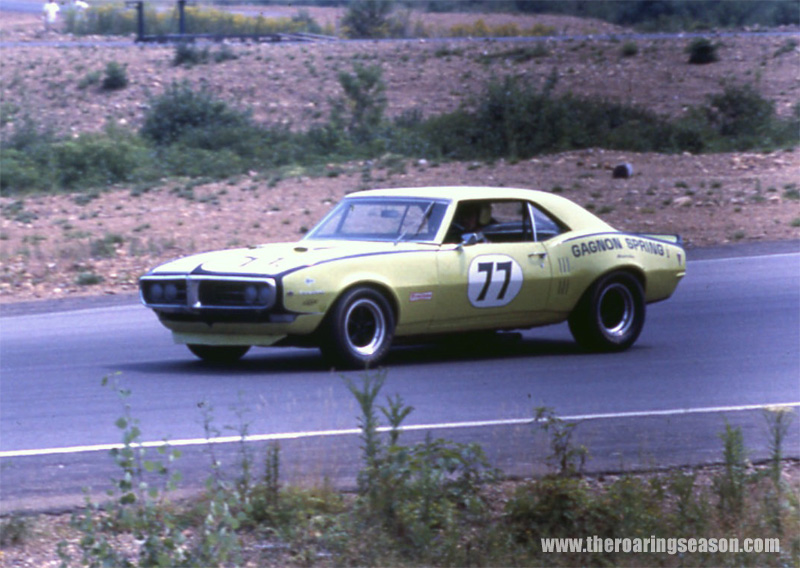-
Administrator

In fact, the Fisher Firebird was actually the Camaro he’d contested the early rounds, which started life as a 1967 model. The team simply changed the sheet-metal, including the nose, hood, and tail-pan, plus they cut sections out of the rear quarters to fit the Firebird flutes. Initially, the car retained its white paint, as it had appeared in Camaro form, but was soon presented in a striking yellow with black scallops running back from the nose, with more scallops coming forward from the tail-pan across the hipline. It was a superb looking car.

Howard Cohen photo of the Gagnon Springs Firebird in original Camaro form, as driven by Francois Favreau at a St. Jovite USAC or F1 support race.

Gilles Corbeil photo showing the car in its Trans-Am debut race as a Firebird, at Meadowdale, still wearing its white paint.

Now with black hood and stripes over the roof and down the rear.
Throughout the remainder of the season, Fisher produced several more strong results, including 4th at St Jovite, 2nd at Continental Divide, and 3rd at Riverside.
Meanwhile, over in the factory Shelby camp, Ford hero Jerry Titus, who’d won the Trans-Am Championship for Mustang in 1967, had become increasingly frustrated with his teams progress. For 1968, Ford developed their famous tunnel-port heads, in a desperate bid to try and bridge the horsepower gap to Chevrolet. The tunnel-port motors proved powerful, but were incredibly unreliable, with engine failures taking place in most races, and even throughout practice and qualifying. Prior to the final round, Carroll Shelby got wind of the fact Titus was planning to depart, and so he fired his number one driver. Titus had watched Fisher scoring top results in his privateer Firebird, and figured a factory backed effort could at least be the equal of the dominant Penske Camaro. After all, they were essentially the same car.
To that end, Titus had Godsall quickly hash together a Firebird for the final race. Again, this car started life as a 1967 Camaro, built by Jon Ward, which was hastily converted to Firebird sheet-metal. And Titus promptly stuck the car on pole. He was leading the race from Donohue when the engine failed on lap 43 or 124. But the potential was clear to see. In that same race, Fisher finished 2nd to Donohue.

Bill Sutton photo from Bryar 1968.
For 1969, Jerry Titus and Terry Godsall formed T/G Racing, and with backing from Pontiac, entered the Trans-Am series as a factory team. In addition, Pontiac set about building a homologation special, with design aspects and parts intended to help the effort. To make clear their intentions, they approached the SCCA and arranged a lucrative deal by which they’d name their homologation special the Pontiac Firebird Trans-Am, for which they’d pay the SCCA $5 for every car that carried the name.
The Trans-Am name remained a hero car throughout the remainder of Pontiacs history, before the company was eventually closed by GM in 2010. Although it took until 1972 before a Pontiac finally won a Trans-Am race, the Trans-Am name in the Pontiac companies line-up of road cars proved extremely successful, eventually becoming a star of the silver screen in movies such as Smokey And The Bandit, Hooper (both starring Burt Reynolds at the pinnacle of his popularity), Knight Rider, and others.
And it all started with that little yellow Firebird raced by the painfully shy, but hugely accomplished Craig Fisher. This is the car I’ll be building a replica of.
 Posting Permissions
Posting Permissions
- You may not post new threads
- You may not post replies
- You may not post attachments
- You may not edit your posts
-
Forum Rules






 Reply With Quote
Reply With Quote